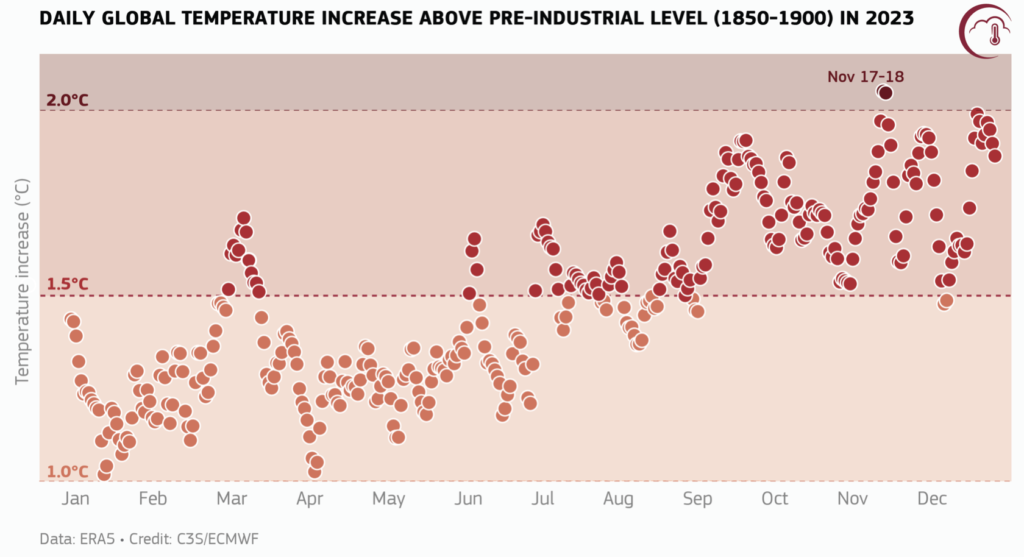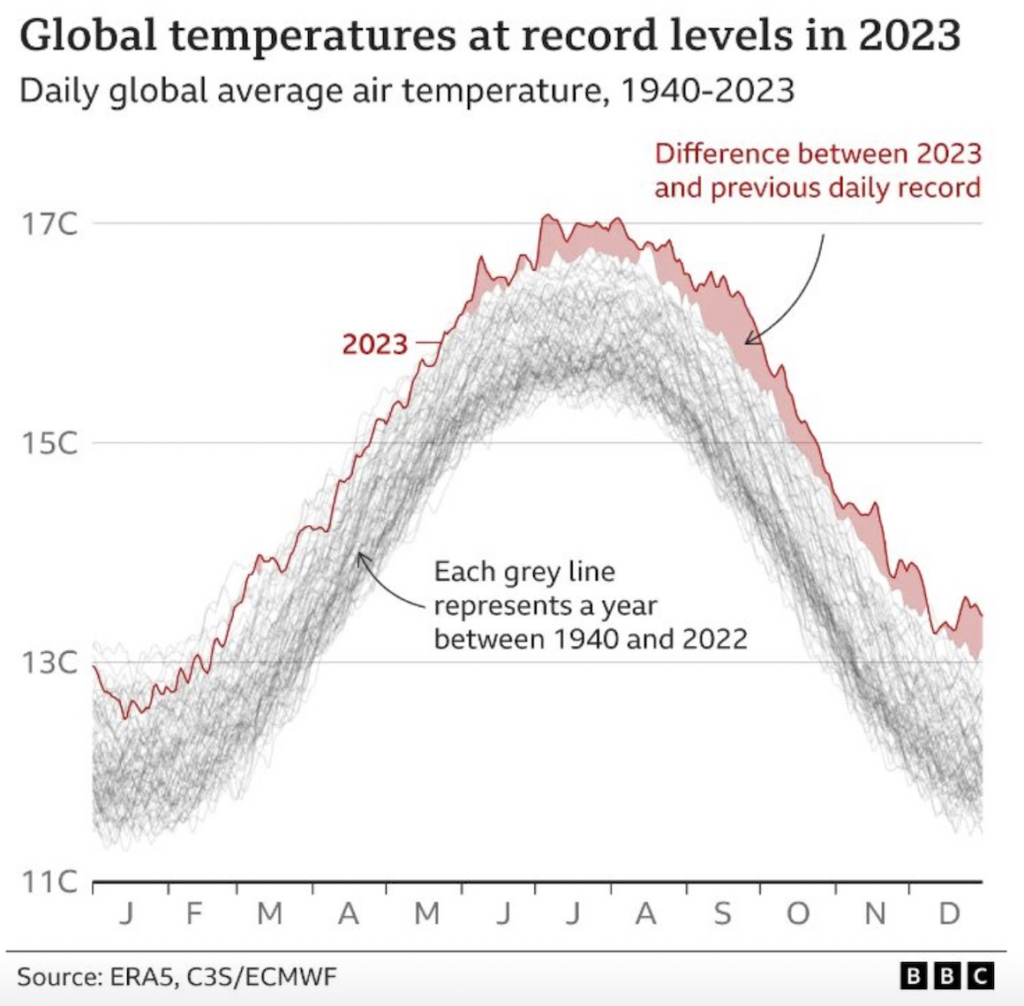2023 was 1.48°C warmer than the 1850-1900 pre-industrial level.

Global surface air temperature highlights:
- 2023 is confirmed as the warmest calendar year in global temperature data records going back to 1850.
- 2023 had a global average temperature of 14.98°C, 0.17°C higher than the previous highest annual value in 2016.
- Each month from June to December in 2023 was warmer than the corresponding month in any previous year.
- July and August 2023 were the warmest two months on record.
- December 2023 was the warmest December on record globally, 1.78°C above the 1850-1900 level for the month.

Ocean surface temperature highlights:
- Global average sea surface temperatures (SSTs) remained persistently and unusually high, reaching record levels for the time of year from April through December.
- 2023 saw a transition to El Niño. In spring 2023, La Niña came to an end and El Niño conditions began to develop, with the WMO declaring the onset of El Niño in early July.
- The unprecedented SSTs were associated with marine heatwaves around the globe, including in parts of the Mediterranean, Gulf of Mexico and the Caribbean, Indian Ocean and North Pacific, and much of the North Atlantic

Other remarkable highlights:
- 2023 was remarkable for Antarctic sea ice: it reached record low extents for the corresponding time of the year in 8 months.
- The atmospheric concentrations of carbon dioxide and methane continued to increase and reached record levels in 2023, reaching 419 ppm and 1902 ppb respectively. Carbon dioxide concentrations in 2023 were 2.4 ppm higher than in 2022 and methane concentrations increased by 11 ppb.
- A large number of extreme events were recorded across the globe, including heatwaves, floods, droughts and wildfires.
It is likely that a 12-month period ending in January or February 2024 will exceed 1.5°C above the pre-industrial level.
Source: Copernicus
